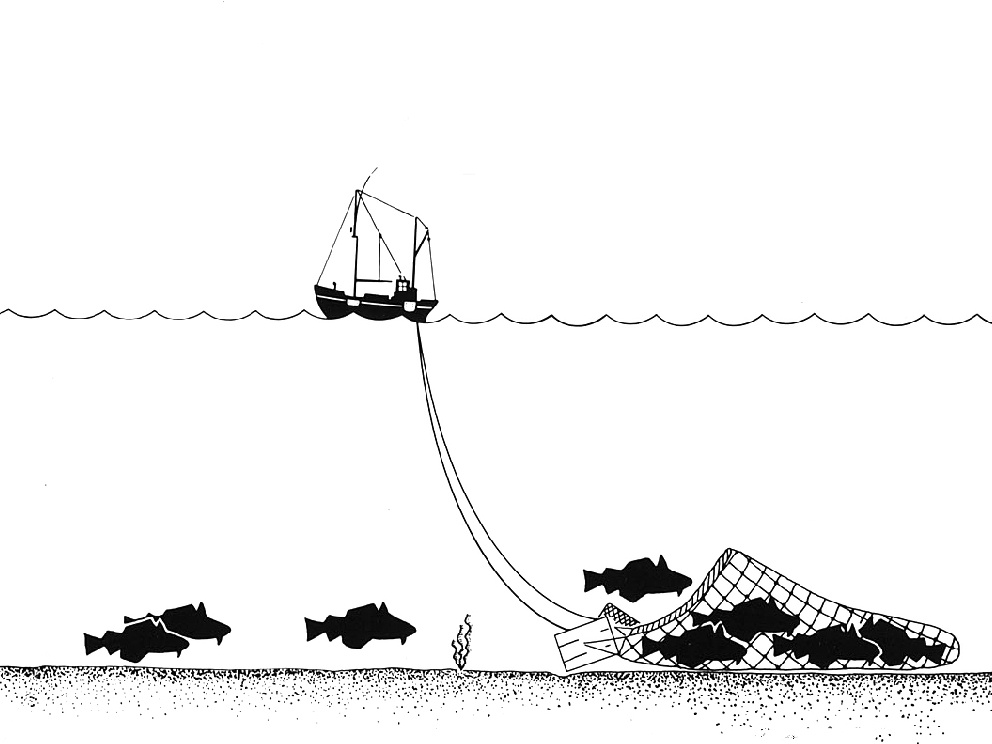Tag Archives: wondyrchoum
History of Trawling; not a modern problem

One of the earliest known complaints regarding trawling is in fact 400 years older than the U.S. Declaration of Independence and over two centuries older than all the Shakespeare plays; it dates back to the European Middle Ages but raises the same questions as we discuss to today: the effect of trawling on the ecosystem, the consequences of a small mesh size, and industrial fishing for animal feed.
During the reign of Edward III, a petition was presented to the British Parliament in 1376 calling for the prohibition of a “subtlety contrived instrument called the wondyrchoum”. According to the petition, the wondyrchoum was a type of beam trawl, which caused extensive damage to the environment in which it was used.
“Where in creeks and havens of the sea there used to be
plenteous fishing, to the profit of the Kingdom, certain fishermen
for several years past have subtily contrived an instrument
called ‘wondyrechaun’ […] the great and long iron of the
wondyrechaun runs so heavily and hardly over the ground when
fishing that it destroys the flowers of the land below water there,
and also the spat of oysters, mussels and other fish up on which
the great fish are accustomed to be fed and nourished. By which
instrument in many places, the fishermen take such quantity of
small fish that they do not know what to do with them; and that
they feed and fat their pigs with them, to the great damage of the
common of the realm and the destruction of the fisheries, and
they prey for a remedy.”
According to the letter, a wondyrchoum had a 6 m (18 ft) long and 3 m (10 ft) wide net
“[…] of so small a mesh, no manner of fish, however small, entering within it can pass out and is compelled to remain therein and be taken […].”
Another source* describes the wondyrchoun as ” […] three fathom long and ten mens’ feet wide, and that it had a beam ten feet long, at the end of which were two frames formed like a colerake, that a leaded rope weighted with a great many stones was fixed on the lower part of the net between the two frames, and that another rope was fixed with nails on the upper part of the beam, so that the fish entering the space between the beam and the lower net were caught. The net had maskes of the length and breadth of two men’s thumbs.”
The Crown responded to the 14th century complaint by letting “[…] Commission be made by qualified persons to inquire and certify on the truth of this allegation, and thereon let right be done in the Court of Chancery”.
Eventually, bans were introduced regulating the use of wondyrchoums in the kingdom and in 1583 two fishermen were actually executed for using metal chains on their beam trawls.
British fishermen continued to use trawl nets despite the ban, but trawling didn’t become the ravishingly successful fishing method of today until the advent of steam power and diesel engines in the 19th and 20th century.
In 1863, a Royal Commission was established in Great Britain to investigate the accusations against trawling, among other complaints. One of the arguments presented by the defence was a witness who, when asked what food fish eat, replied:
“There is when the ground is stirred up by the trawl. We think the
trawl acts in the same way as a plough on the land. It is just like
the farmers tilling their ground. The more we turn it over the
great supply of food there is, and the greater quantity of fish we
catch.”**
The Royal Commission also noted that when a trawler harvests an area already harvested by another trawler, the second trawler usually catches even more fish than the first. This was interpreted as a sign of the benevolence of trawlers, when in fact the high second yield is caused by how the destruction inflicted on the area by the first trawler results in an abundance of dead and dying organisms which, temporarily, attracts scavenging fish.
The result of the Royal Commission’s investigations was the abandonment of over 50 Acts of Parliament and a switch to virtually unrestricted sea fishing. Today, the 14th century issue of destructive fishing practises is more acute than ever.
* Davis, F (1958), An account of the fishing gear of England and Wales, 4th Edition, HMSO
** Roberts, C (2007), The Unnatural History of the Sea, Gaia